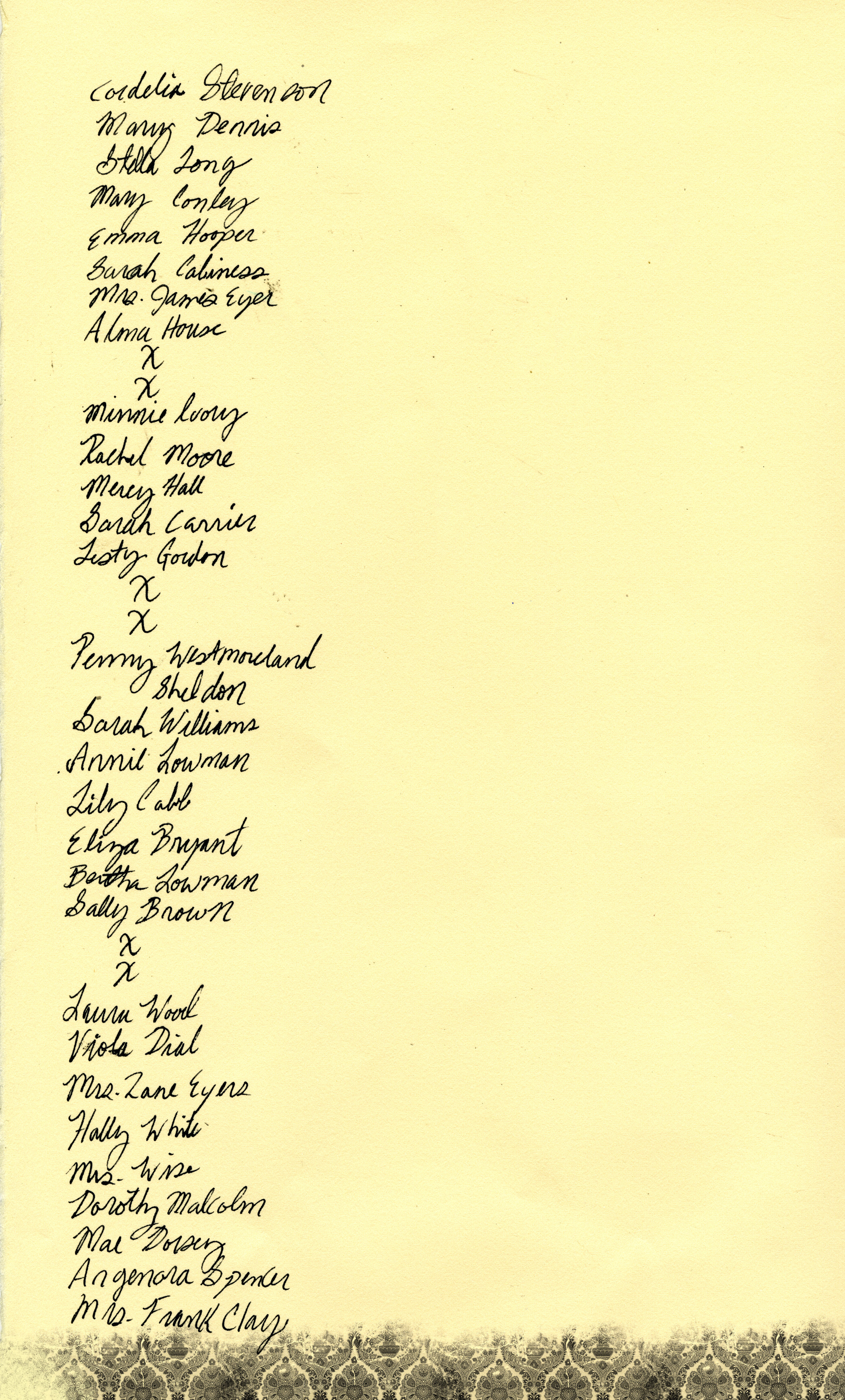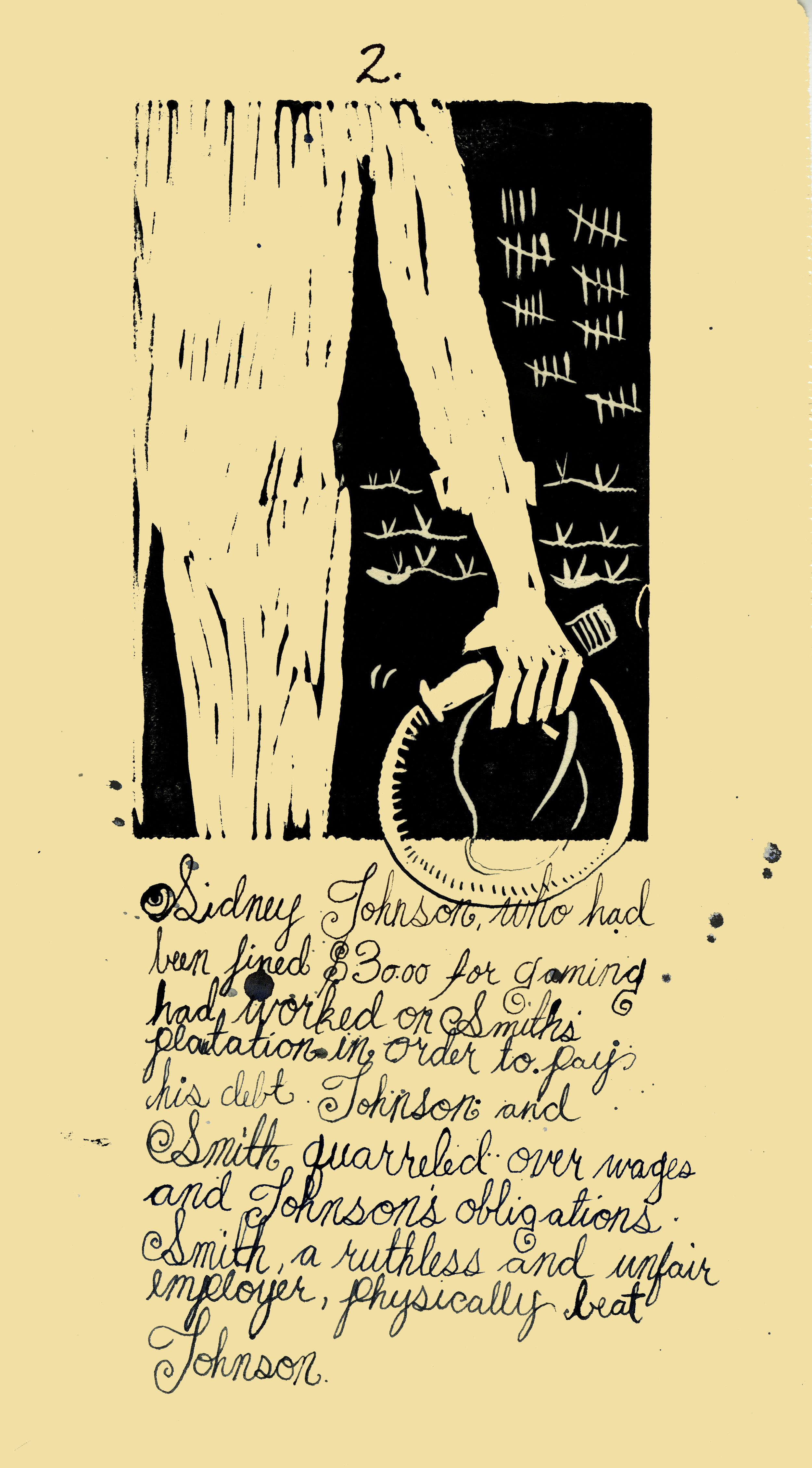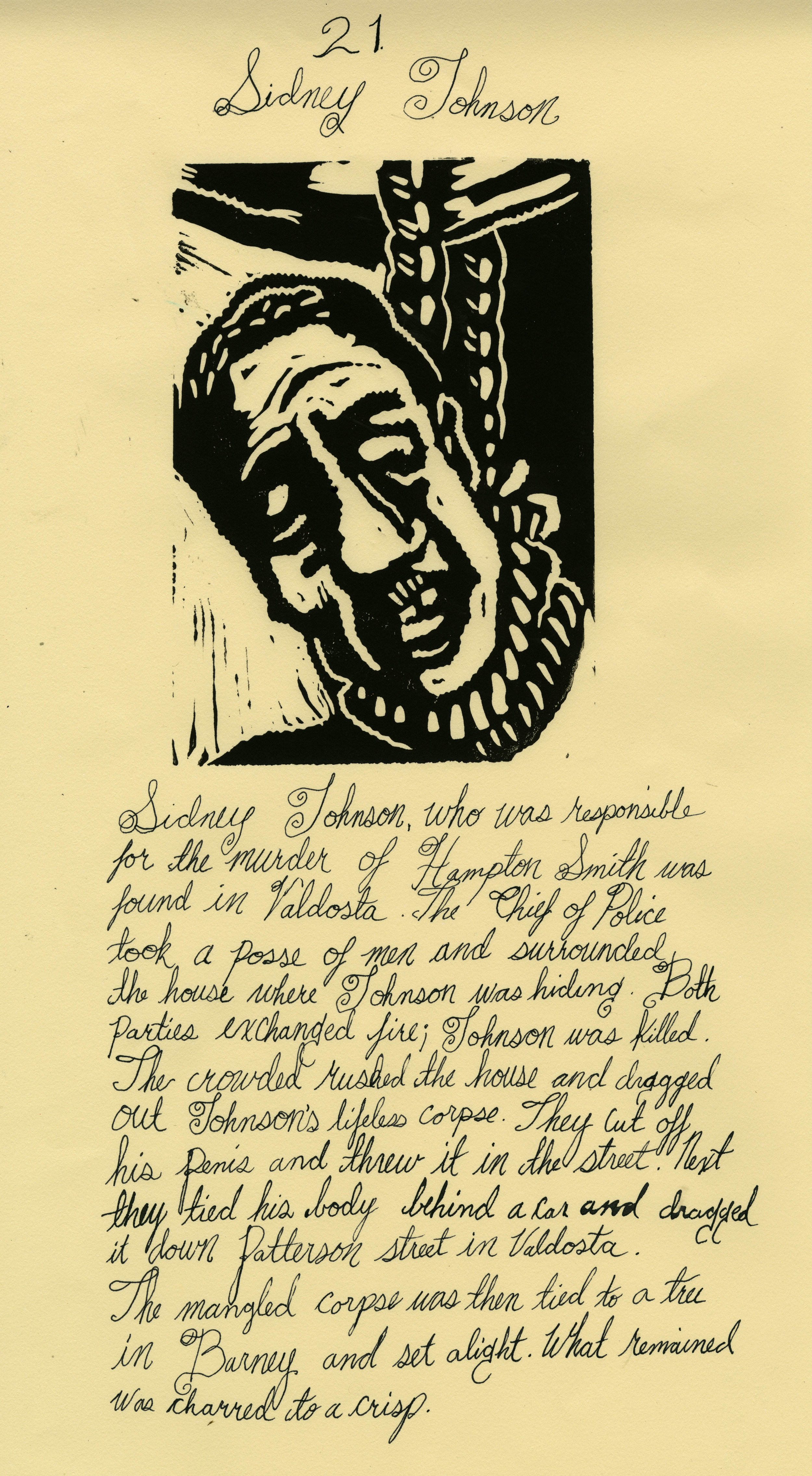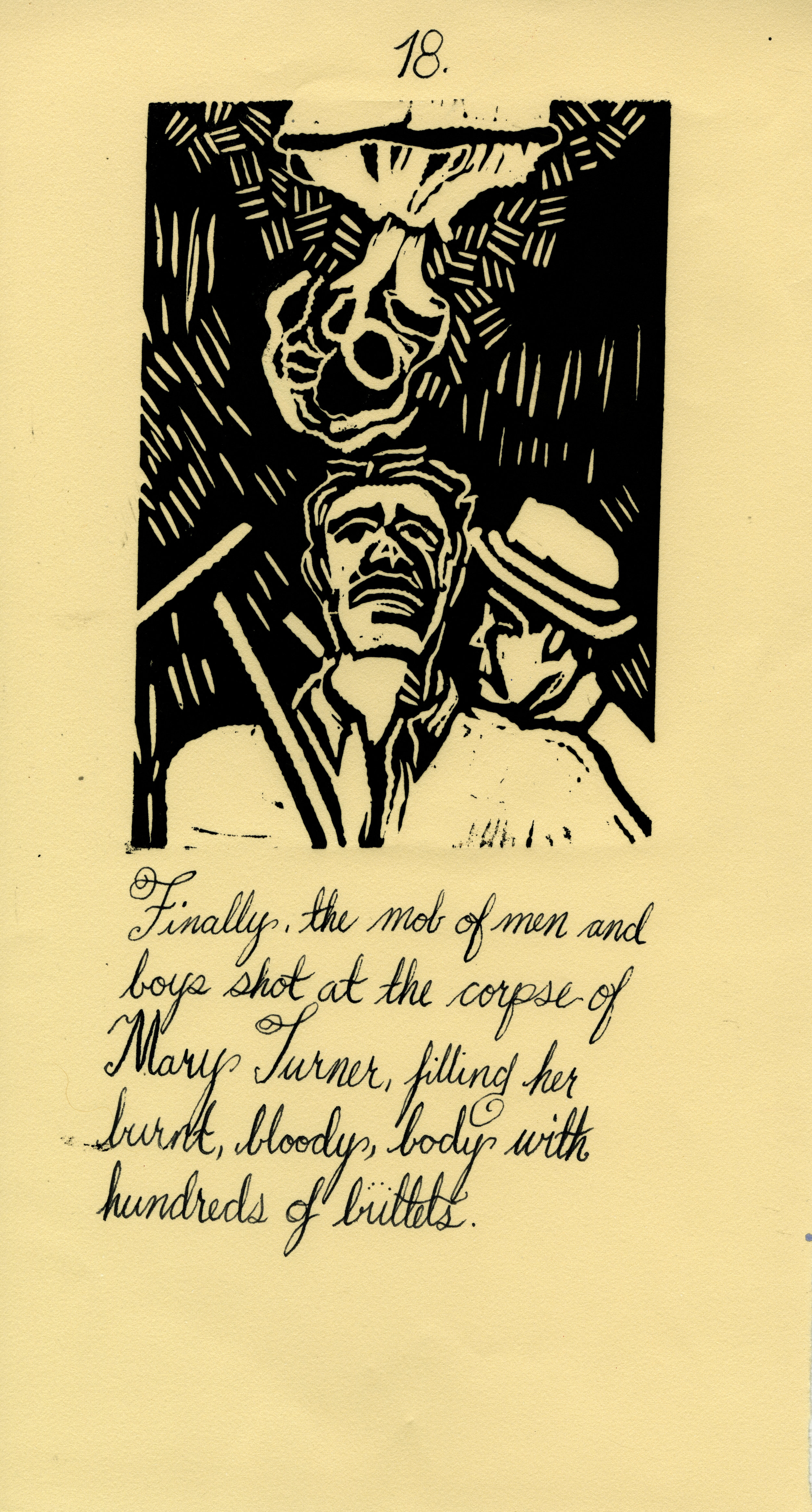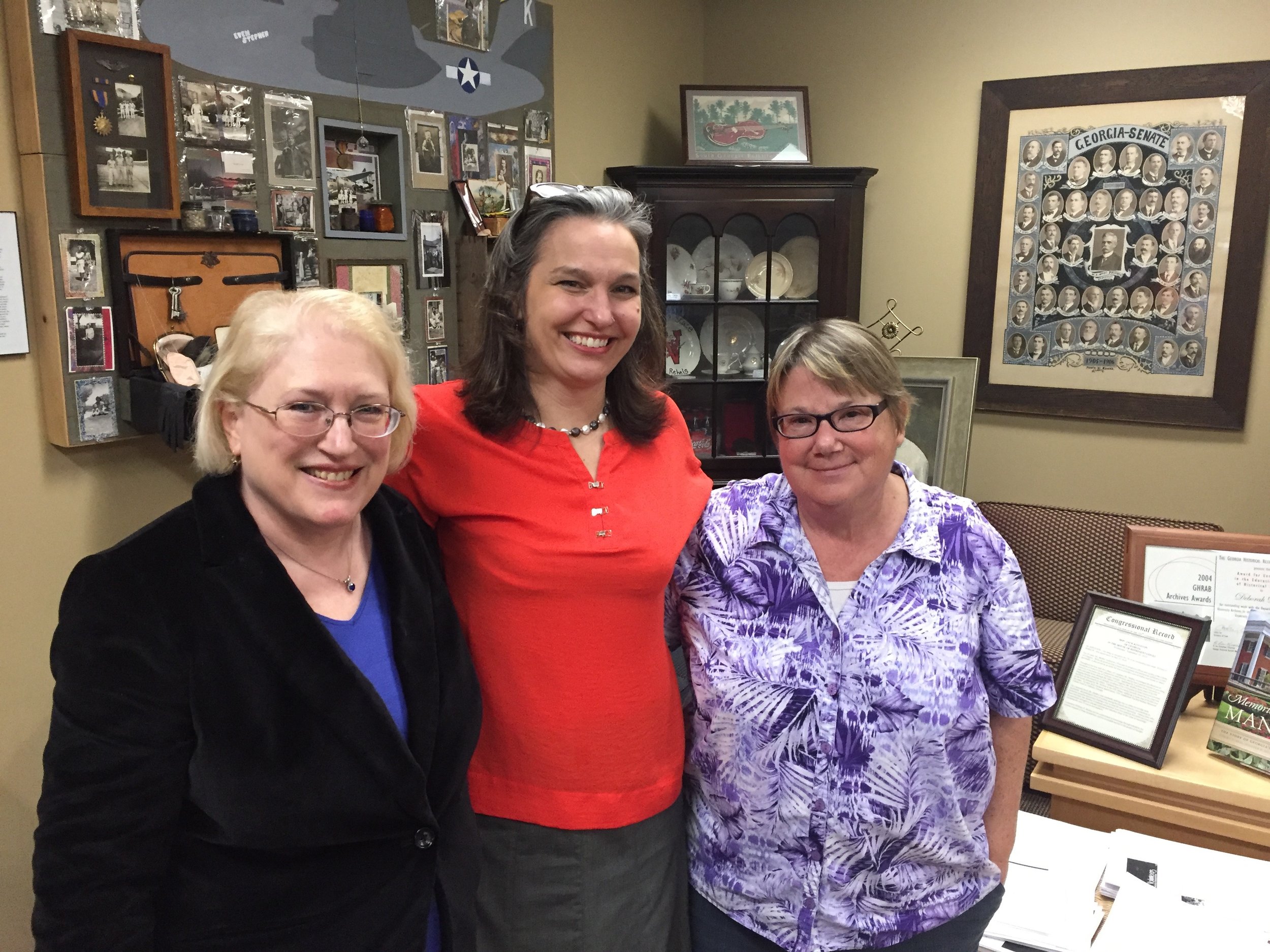Elegy for Mary Turner
Elegy for Mary Turner (to be published by Verso Books in 2021 is part of a larger body of work about race, violence, history, and graphic narratives. In recent years the focus of my work has been based on the history of white violence against African Americans. For hundreds of years graphic narratives were used against African Americans to incite fear and anchor cultural stereotypes in place. The first time I heard the story of Mary Turner it resonated with me. It made cold stones in my stomach that refused to pass. It made me feel visceral pain and revulsion. Not only because I am a mother and that I have carried babies in my womb, not only because when I heard this I was a doula and had witnessed women giving birth and bearing children, not only because like all of us I had seen first hand the inherent horror of ubiquitous racism, not only because I had been to the place where this happened but because it was not rare. Because it happened so many times in our culture. Because black women, even now are still being punished for speaking out, for existing, and for having children.
Lynching in America evokes images of hanging but it includes drowning, dragging, shooting, stabbing, burning, and beating. New Statistics were released last year from the Equal Justice Institute, “The authors of the report compiled an inventory of 3,959 victims of “racial terror lynchings” in 12 Southern states from 1877 to 1950.” (New York Times February 10, 2015 http://www.nytimes.com/interactive/2015/02/10/us/map-of-73-years-of-lynching.html) The report found that Mississippi, Georgia, and Louisiana had the highest number of lynchings.
Lynching is tied up in a larger package of race and violence. It is often couched in the idea of keeping white women safe from black men. Black men have been historically depicted by white supremacists as atavistic, brutes, sexual predators, natural criminals. It was used a tool of terror not only for the victim of the lynching but against the entire African American community. Terror lynchings were often done in broad daylight in places where there was a great deal of traffic such as public squares, fair grounds, cross roads and bridges. White community members, men, women and children attended terror lynchings. Sometimes there were hundreds if not thousands of spectators. The often mutilated bodies were left in place as a reminder to African Americans that they were never to cross the race line with regard to power without consequences. For humans death can be scary, but a painful tortured death is often one of the things all of us fear the most. Many of us fear a death that involves humiliation, suffering, and a prolonged and painful end.
Black victims of lynching were often demonized as violent and dangerous despite the fact that many victims were not connected to any crime. This idea was used to stoke fear in the masses, cripple any advances in black civil rights, and justify white supremacy. Lynching is often couched in the idea of mob justice and vigilante heroism. But these murders happened with no consideration for justice. The murderers went unpunished. One common response by lawmakers was that if African Americans were capable of policing their own communities and casting out the criminal elements then the white community would not have to engage in this kind of violence on behalf of public safety.
The idea that African Americans are less than human, a threat to public safety and civic life, and in need of constant surveillance and control has been present in popular culture, the world of medicine and even in the way that the laws were and are still enforced. The effects of this racism are still present. The attention given to police shootings of black unarmed citizens has brought this lack of racial justice to light in recent years. Redlining has led to ongoing segregation with regard to neighborhoods and housing and an inability to pass down wealth to children, our nation locks up more people than any country on earth, one among many issues that faces our country is disproportionate minority contact. 1 in every 15 African American men and 1 in every 36 Hispanic men are incarcerated in comparison to 1 in every 106 white men
In 2014, the imprisonment rate for African American women (109 per 100,000) was more than twice the rate of imprisonment for white women (53 per 100,000).3
http://www.sentencingproject.org/wp-content/uploads/2016/02/Incarcerated-Women-and-Girls.pdf
Women who are perceived as black have always been the most vulnerable with regard to these ideas grounded in white supremacy. Even today this still is evident. Black men and women generally make less than white men and women in hourly wages and black people have higher rates of asthma, HIV, AIDS, diabetes, cardiovascular disease and higher rates of infant mortality. Hispanic and Native Americans and Native Alaskans are the only groups who fare worse. Today Black men have the shortest expected life span of any group. This in part is due to poverty, access to medical care, and the treatment options that are available. When people of color visit a medical facility they are more likely to experience bias among healthcare workers. A study published in 2016 found that oftentimes black patients were under treated for pain by white physicians and that many medical students thought that black people felt less pain than whites because they thought the skin of African Americans was “naturally” thicker. Medical students in 2016…( http://www.pbs.org/newshour/bb/is-there-a-racial-care-gap-in-medical-treatment/)
In terms of infant mortality: In 2007, the infant mortality rate for non-Hispanic black women was 13.31 infant deaths per 1,000 live births, 2.4 times the rate for non-Hispanic white women (5.63) (2007 CDC). We do these things to each other. We kill, punish, restrict, and ignore based on the sociocultural myth of race. Make no mistake race is socially constructed it is not biological.
These ideas carried forward from the time that African people were enslaved in order to control them with fear and violence and balance the cognitive dissonance that comes from these horrific practices, from treating other people as less than human. They were propagated by artists, sociologists, lawyers, police, governors, chancellors, presidents anthropologists, journalists, teachers, preachers, --this list goes on and on. It is easy to say these ideas belong to people who are ignorant, but don’t believe that for an instant. I don’t believe that because I have the privilege of sitting in a place of learning and tolerance that these ideas don’t exist.
At the same time I learned of the Mary Turner story I visited Washington DC to look in the national archives for information about Detroit. One afternoon after sitting under fluorescent lights and reading photocopied documents for hours I decided to stroll to the National Museum of Women in the Arts. In the library in a small and exhibition were the wood cuts of Czech artist Helena Bochořáková-Dittrichová.
She had been influenced by Frans Masereel, also one of the artists that I really loved. He also influenced the work of Lynd Ward as well as Eric Drooker.
When I thought of the story of Mary Turner it appeared in my mind as images in this vain. As block prints. I wondered if I could produce her story as a wordless graphic narrative much like these artists had produced stories of political strife, inner turmoil, epic journeys and everyday life as graphic narratives. Over the course ofroughly a year I created over 20 linoleum cuts. I make prints like a painter, not a printmaker. The image is the most important part for me. Unlike true printmakers I am happy with one. I love making images but I detest printing them. As a consequence I like the blocks more than the prints and made them without printing a single one until the end. It took me about two months to print the series. When I was finished they told a generic story about lynching and racial violence. What stood out, similar to the way the events surrounds Mary Turner’s murder stand out was that in the middle of the story were images of a woman and a baby. Without text the story was not specific. My own handwriting has always been horrible. Even in my comics I labor over making fonts. I am incapable of hand lettering. One of the things about this project that struck me when I thought of images and of the year 1918 was world war one. It was during this same year that my great grandfather was killed in France. Like me my grandmother saved correspondence. When she died I rescued two shirtboxes full of postcards from the goodwill pile. One box was full of blank postcards she had collected during her travels in the United States. They are largely uninteresting and mostly come from hotels that are recommended by triple A, one of my grandmother’s favorite organizations. But mixed in with these blank postcards are letters my great grandmother received from friends and family during the war. There is also a pile of correspondence related to my grandfather’s death. All of these appear to be written with fountain pens or dip pens and inkwells. The handwriting is graceful; it is evidence of hours of painstaking discipline and drills. In some cases it even looks like the writers used a ruler to make sure there were no deviations from the ruled line. If I could write and think of it as drawing then perhaps I could write Turner’s story as part of the images and make the collection specific through text. I spent part of the summer teaching myself to imitate the writing that appeared on the postcards from my grandmother’s collection of correspondence from World War I. While the text is original the source of the story is not.
I had been inspired and informed by the work of the Mary Turner Project spearheaded by professors at Valdosta State and community members in that region. In particular the work of Walter White. Like most scholars and artists I have multiple projects in process at all times. One of the other things I am working on is a graphic novel about the 1943 Detroit Race Riots. Walter White figures prominently into this work as well so when I saw a document on the website that linked to his article for The Crisis, the official publication of the NAACP founded in 1910 by W.E.B Dubois, I was hooked. I found the story of Mary Turner while researching materials for the 1943 project. Walter White returned to Georgia to investigate the lynching rampage and to gather information and find witnesses. He conducted the most comprehensive investigation into the subject at the time. His work resulted in letters to the governor, Hugh Dorsey, a list of people who participated in the lynchings, and a witness, who failed to come forward after months of persuasion. White was born in 1893 in Atlanta and died in 1955.
Both of white’s parents were born into slavery and like Walter, his father could have passed for white. In 1918 he joined the NAACP, this investigation in Valdosta was one of his first assignments. He came into town at first posing as a salesman. With his blue eyes and blonde hair and his natural southern accent he blended easily with the locals. His account of the lynching rampage in The Crisis is one of the most comprehensive histories of what happened in 1918.
Another source of information is the wonderful book by Julie Armstrong Mary Turner and the Memory of Lynching published in 2011 by the University of Georgia Press. Also the fabulous Mary Turner Project put together by community members and faculty and staff at Valdosta State University (http://www.maryturner.org/). So I want to clarify that unlike some of my other graphic narrative projects I have not done first hand archival research. I have literally crouched on the shoulders of giants for this project. In some ways this was a relief that I could just focus on the images. I have spent months and years in archives for some of my other pieces and to only think of images and not have to do anything other than read what others had written was a joy. I often work not in singular images but in serial images that link and connect to each other. This lends itself to projects that are best enjoyed as books. Books unlike art exhibits are portable and they can be returned to in intimate moments and in the privacy of one’s own home. I am not fond of the digital with regard to sequential stories, I much prefer an object you can hold. I hope to turn these images into a book; Julie Buckner Armstrong, a generous colleague and the author of Mary Turner and the Memory of Lynching has agreed to write the introduction. She knows far more about this story than me.
As an artist I believe that art can create an opportunity for our social imaginations to stretch. Maxine Greene wrote: “[O]f all our cognitive capacities, imagination is the one that permits us to give credence to alternative realities. It allows us to break with the taken for granted, to set aside familiar distinctions and definitions.”(Releasing the Imagination Pg. 3)
For more information about the performance see the following links:
http://www.englert.org/event/elegy-mary-turner/
These are links to the piece published in Meridians (V. 19 #1)
https://sophia.smith.edu/meridians/on-the-line/volume-19-number-1/elegy-for-mary-turner/
Here is a link to the PDF
https://doi.org/10.1215/15366936-8117702
https://www.versobooks.com/books/3735-elegy-for-mary-turner
______________________________________________________________
Valdosta State University purchased the entire portfolio of prints associated with this project in 2017. The work was displayed in 2018.
http://www.walb.com/story/37519245/vsu-presents-mary-turner-lynching-exhibit
Dr. Deborah Davis, Rachel Williams, and Julie Bowland at Valdosta State University
Processing the performance with Dancer and Choreographer Dr. Christopher Rasheem McMillan at Roosevelt University, October 20,2018 (Image taken by Wendy Miller)


